Blog

Looking to create a men’s grooming line? Discover expert men’s personal care manufacturing services including: formulation services, white label, private label and contract co packing. 🚀 Why Men’s Personal Care Manufacturing Is Booming in 2025 According to Mordor Intelligence, the global men’s personal care market is valued at USD 47.06 billion in 2025, and is projected to grow to USD 64.14 billion by 2030, at a compound annual growth rate (CAGR) of 6.39%. Source: Mordor Intelligence – Men’s Personal Care Market Report For startups, influencers, wellness brands, and retailers, launching a dedicated men’s line is no longer optional — it’s a major opportunity. At AURA, we specialize in men’s personal care manufacturing for companies ready to enter (or expand in) this fast-moving market. 🧠 Who We Can Work With We can manufacture private label and custom men’s products for: ✅ DTC and eCommerce brands ✅ Retail chains and salons ✅ Grooming & lifestyle influencers ✅ Subscription box services ✅ Corporate wellness brands Whether you're creating your first product or scaling an existing line, our team is built to support formulation to fulfillment. 🏗️ What Is Men’s Personal Care Manufacturing? Men’s personal care manufacturing is the process of developing, formulating, producing, packaging, and labeling grooming products tailored specifically for male consumers. We can help your brand create high-performance skin care and hair care. Popular Men’s Products We Can Manufacture: Men’s face wash and cleansers Beard oils, balms, and conditioners Anti-aging and under-eye creams Body washes and scrubs Post-shave treatments and moisturizers Natural deodorants for men Men’s hair styling products Moisturizers and serums Custom Formulation or Private Label — You Choose Whether you want a ready-to-go private label solution or a custom formula built from scratch, we’ve got you covered. 🔬 Custom Formulation Work with expert chemists to create your next product. Tailor ingredients to your brand’s values (natural, vegan, etc.) Full control over texture, scent, color, and performance 🏷️ Private Label Men’s Products Choose from proven, commercial, market-ready formulations Add your branding, choose your packaging, and go to market faster Ideal for companies looking to test the market or scale quickly 📦 Packaging, Design & Fulfillment We go beyond formulation — offering turnkey services including: Custom packaging design & sourcing Labeling Low MOQs for startups Scalable production for growing brands 📈 Why Brands Are Launching Men’s Grooming Lines 1. 💡 Underserved Market Most personal care shelves are still dominated by women’s products — but men are actively looking for tailored solutions. 2. 💰 Strong Margins & Loyalty Men stick with what works. Once they love a product, they typically reorder — leading to high customer retention*. 3. 📦 Perfect for Subscriptions & Bundles From beard kits to skincare regimens, men’s products are ideal for subscription boxes and curated routines. 4. 🌱 Demand for Clean, Natural Products Clean ingredients, ethical sourcing, and minimalist packaging resonate with modern male consumers. 💼 Why Work With Us? Custom Formulation Services: Experienced chemists specializing in skin care and hair care. Startup-Friendly: Low minimums, fast turnaround* Scalable Manufacturing: Small batch to scale up production* Natural & Performance-Based Options: We help your brand stand out 🙋 Frequently Asked Questions Q: How do I start a men’s grooming line? A: Start by defining your target audience, product types (skincare, beard care, etc.), and brand values. Then partner with a trusted manufacturer like us to guide you through formulation, packaging, and launch. Q: What’s the minimum order quantity (MOQ)? A: We offer low MOQs to help startups and small businesses launch affordably*. Contact us for specific quantities. Q: Can you manufacture for international markets*? A: Absolutely, let us know where you are looking to distribute your products. Let’s Build Your Men’s Personal Care Brand — Together Whether you're creating a single hero product or an entire grooming system, we’re here to help you every step of the way. 🔬 Formulation 📦 Packaging 🚀 Launch Support
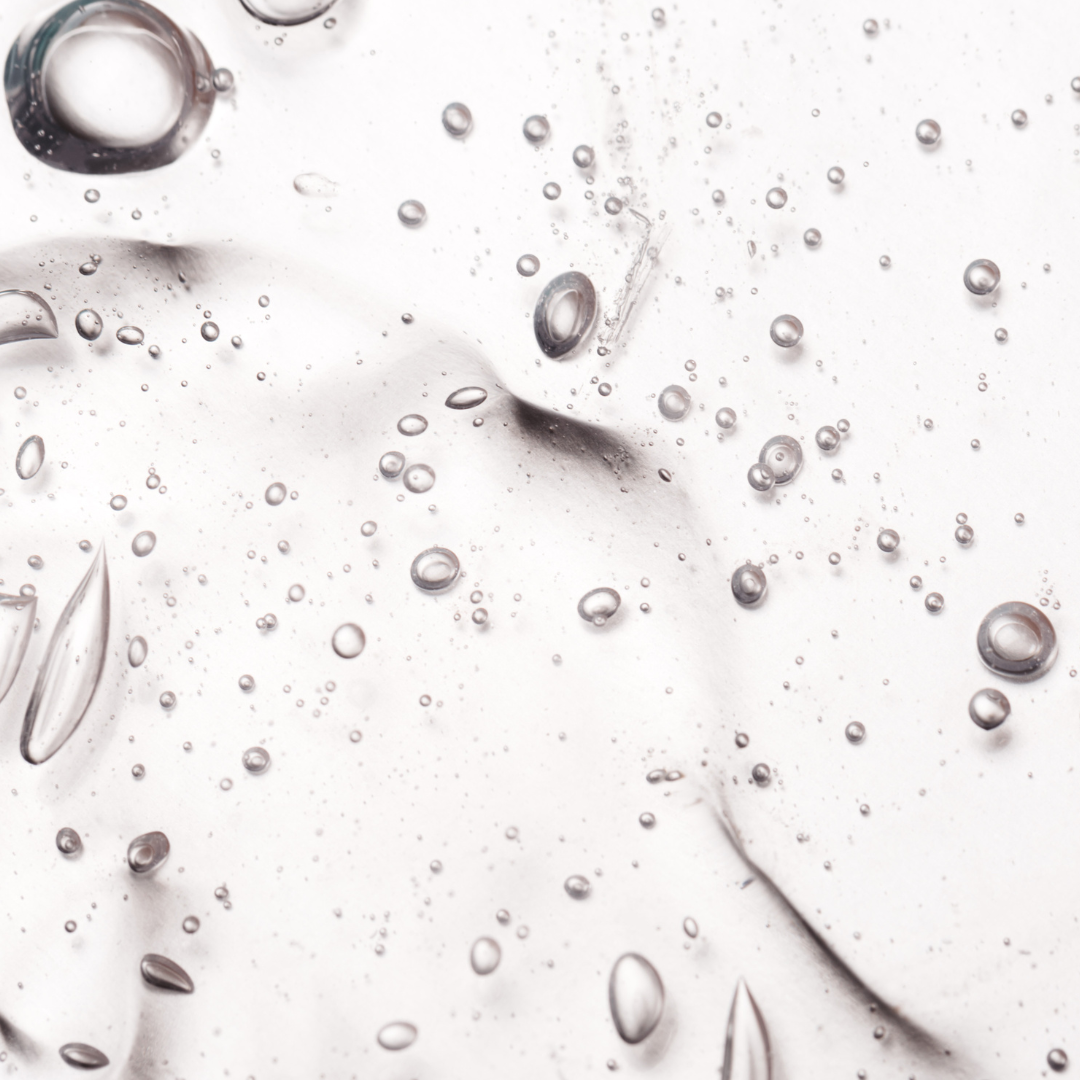
As the skincare industry evolves rapidly, manufacturers must keep pace with the latest trends that define the future of skincare products. From clean beauty and personalized skincare to sustainable packaging and AI-driven formulations, these trends are transforming the way brands design, develop, and market their skincare products. In this post, we'll cover the key trends in skincare manufacturing, provide insights into how they affect the market, and show how AURA is embracing these innovations to stay ahead of the curve. 1. Clean Beauty: A Commitment to Pure Ingredients What is Clean Beauty in Skincare Manufacturing? Consumers are increasingly demanding natural, non-toxic ingredients in their skincare products, driving the clean beauty movement. At AURA, we support clean beauty by ensuring our formulations meet the highest standards of the brands that trust us with their cosmetic manufacturing. Our chemists carefully select ingredients that not only work effectively but also align with consumer demand for clean, safe skincare solutions. 2. Personalized Skincare: Tailoring Products for Individual Needs How Do Manufacturers Create Personalized Skincare Products? As consumers seek customized skincare solutions that cater to their unique skin types and concerns, the rise of personalized skincare is transforming the industry. Custom formulations tailored to specific needs—such as acne, aging, or sensitive skin—are becoming increasingly popular. At AURA, we work closely with our clients to create custom formulations that meet individual skincare goals, ensuring each product delivers maximum benefits for its target audience. 3. Sustainable Packaging: Reducing the Environmental Impact of Skincare Products How Are Skincare Brands Moving Towards Sustainable Packaging? With growing environmental concerns, skincare brands are shifting towards eco-friendly packaging solutions. Recyclable, biodegradable, and refillable packaging options are becoming increasingly common in the skincare industry as brands aim to reduce their carbon footprint and appeal to eco-conscious consumers. AURA helps clients incorporate sustainable packaging solutions that not only protect the product’s integrity but also align with consumers' values of sustainability and environmental stewardship. 4. Advanced Skincare Technologies: From AI to Biotechnology What Are the Latest Technological Advancements in Skincare Manufacturing? Technological advancements are playing an increasingly important role in skincare manufacturing. Biotechnology, which involves harnessing the power of natural organisms, and AI-driven formulations, which tailor skincare products to individual skin needs, are just a few examples of how technology is revolutionizing the industry. 5. Inclusivity and Diversity: Skincare for Every Skin Type Why Is Inclusivity Important in Skincare Manufacturing? As the demand for inclusive skincare grows, manufacturers are focusing on creating products that cater to a wide range of skin tones, types, and conditions. Products that address diverse concerns—whether for dry, oily, or sensitive skin—are essential to meeting the needs of today’s consumers. AURA prides itself on working with brands to create skincare products that are not only effective but also inclusive and accessible to all skin types. 6. The Role of Digital Marketing in Skincare Manufacturing How Are Digital Marketing Trends Affecting Skincare Manufacturing? Skincare brands are increasingly leveraging digital marketing and social media to promote their products, with platforms like Instagram, TikTok, and YouTube driving skincare product trends. Manufacturers must adapt to these digital trends by creating products that align with online marketing campaigns and influencer partnerships. At AURA, we understand how critical digital marketing is in skincare. Our products are designed to resonate with today’s tech-savvy consumers, ensuring your skincare brand remains relevant in a digital-first world. Embrace the Future of Skincare Manufacturing with AURA The future of skincare manufacturing is bright, with trends in clean beauty, personalized skincare, sustainable packaging, and technological innovations taking center stage. As the skincare industry continues to evolve, it’s important for brands to partner with a manufacturer who understands these trends and can bring their product vision to life. At AURA, we are committed to staying ahead of the curve, offering innovative, high-quality skincare manufacturing solutions that help your brand thrive in a competitive market. Whether you’re looking to launch a new clean beauty line, incorporate AI into your formulations, or choose sustainable packaging, we’re here to help. Ready to innovate? Reach out to AURA today to discuss how we can help you create cutting-edge skincare products that align with the latest trends and meet the needs of modern consumers.
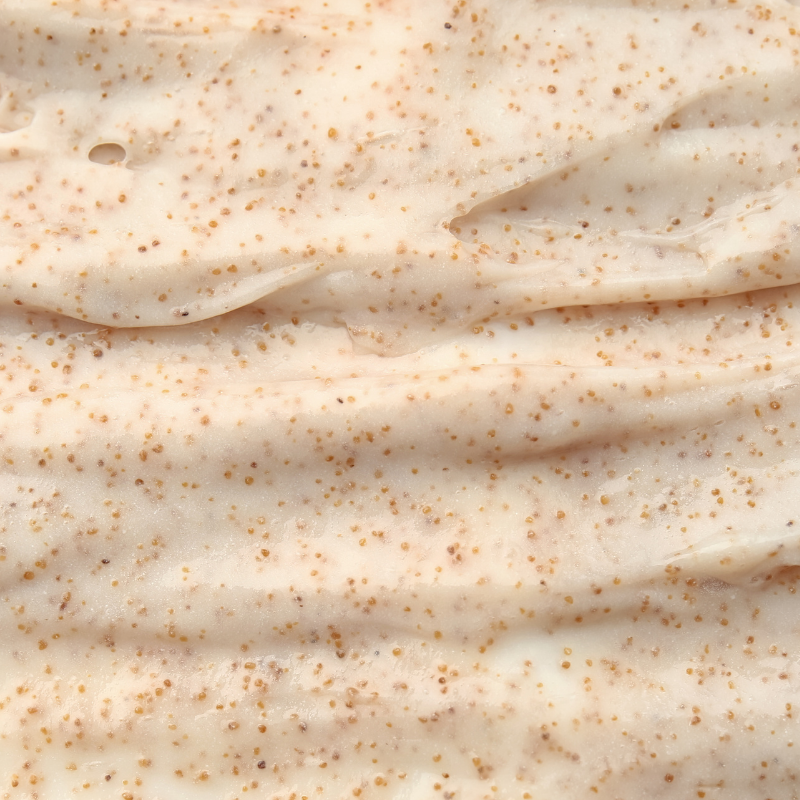
Cosmetic Manufacturing Near Me | Private Label & Custom Formulation | AURA Looking for cosmetic manufacturing near you? AURA Consulting & Manufacturing provides private label, white label and custom formulation services. Based in Texas, AURA serves cosmetic brands in the United States and Canada. Start your cosmetic brand today! Starting a cosmetic brand is exciting—from designing beautiful packaging to seeing your products in customers’ hands. But behind the scenes, launching successfully requires planning, compliance, formulation, and quality assurance. If you’ve ever searched for a “cosmetic manufacturing near me,” you know the importance of finding a reliable partner. At AURA, we help brands bring their vision to life. Whether you’re local or across the country, our team provides hands-on support every step of the way. This guide will walk you through the 7 key steps to launching a cosmetic brand, whether using private label products or custom formulations. 1. Define Your Brand & Niche Identify your target audience: natural, vegan, anti-aging, luxury vs. budget. Research competitors and find gaps in the market. Develop your brand identity, messaging, and price point—these influence formulation, packaging, and marketing. 2. Formulation & Ingredients Choose between private label or custom formulations. Select high-quality, compliant ingredients. Test for safety, efficacy, and stability. 3. Packaging & Label Design Choose packaging that protects the product and fits your brand identity. Labels must comply with FDA guidelines and list ingredients correctly. Consider sustainable packaging options, which are increasingly important to consumers. 4. Manufacturing & Production Private label allows faster launches with existing formulas. Custom formulation creates unique products. Ensure your manufacturer follows GMP standards and maintains thorough batch records. 5. Regulatory & Compliance Comply with FDA, FTC, and, if needed, international regulations. 6. Fulfillment & Logistics Plan for packaging, storage, shipping, and order tracking. Decide whether to drop-ship, handle fulfillment in-house, or use third-party fulfillment. Optimize packaging to protect products during delivery. 7. Marketing, Branding & Launch Build a consistent brand story across packaging, website, and social media. Plan pre-launch campaigns: samples, influencer partnerships, early access, etc. Focus on transparency about ingredients and ethics—customers notice and appreciate it. Still Looking for Cosmetic Manufacturing Near You? If you’ve been searching for “cosmetic manufacturing near me,” AURA is your USA based solution. We serve clients across the U.S. and Canada. Whether you want to launch quickly with private label products or invest in a fully custom formulation, we guide you from concept to finished product—ensuring quality, and seamless fulfillment. Frequently Asked Questions (FAQ) Q: What is the difference between private label and custom formulation cosmetics? A: Private label uses pre-developed formulas branded with your packaging and design. Custom formulation creates a product from scratch tailored to your brand. Aura supports both. Q: How much does it cost to start a cosmetic brand? A: Costs vary depending on product type, packaging, and order size. Private label brands can launch with lower investment, while custom formulations require higher budgets. Q: What regulations do I need to follow when selling cosmetics in the U.S.? A: Cosmetics must comply with FDA labeling and GMP standards. Q: How long does it take to launch a cosmetic line? A: Private label products can launch in weeks*; custom formulations can take several months for development, testing, and production*. Q: Can I find a cosmetic manufacturer near me? A: Yes, AURA serves clients nationwide and in Canada. Even if you’re not local, we provide the hands-on support of a manufacturer “near you". Conclusion Launching a cosmetic brand requires more than a great idea—it requires compliance, planning, and expert execution. At AURA, we make the process seamless, whether you’re a first-time founder or an established brand looking to scale. Stop searching for “cosmetic manufacturing near me”—you’ve found the partner you need. Contact AURA today and bring your brand to life.
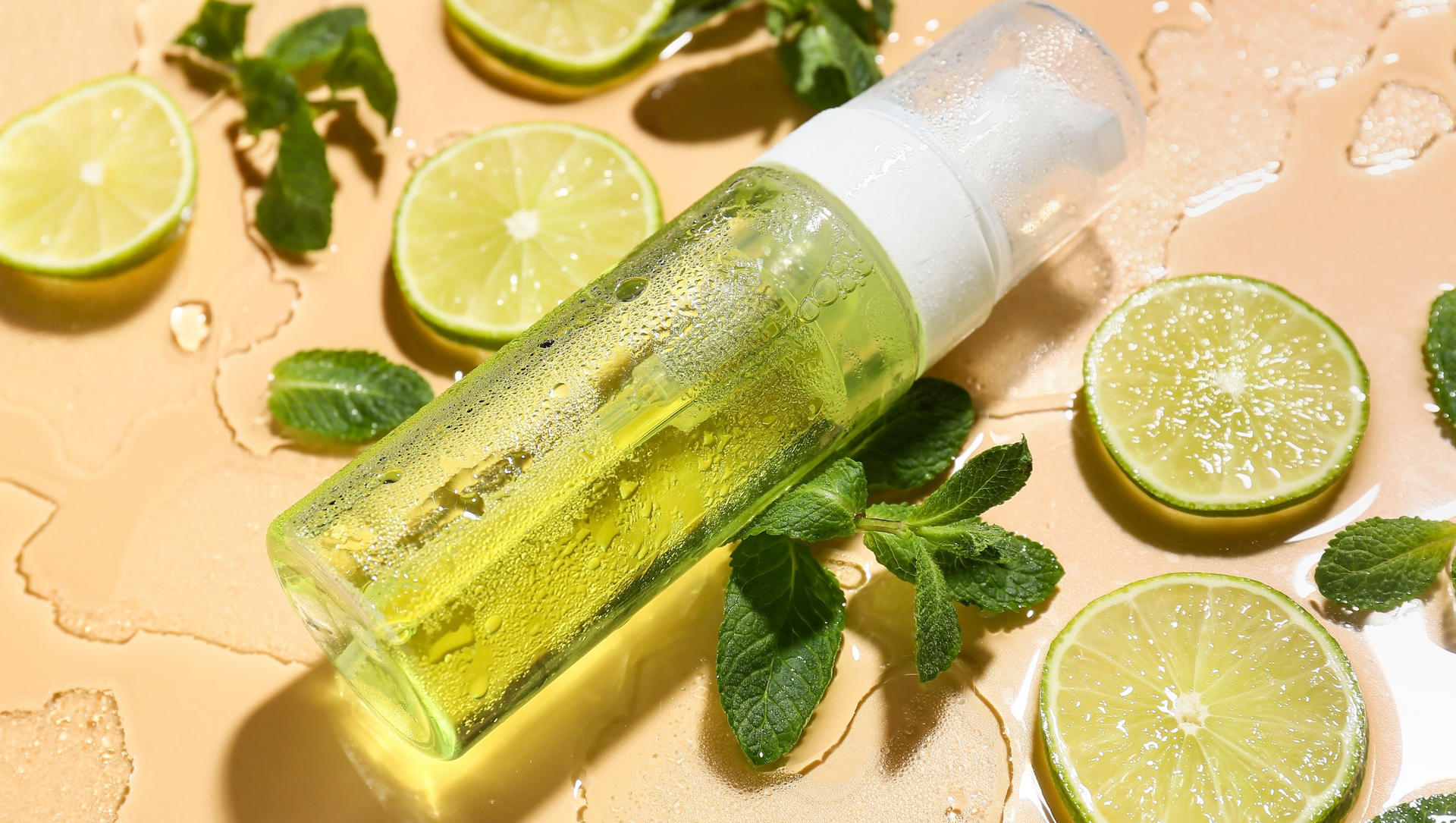
Choosing the Right Packaging for Your Skincare or Cosmetic Product Packaging isn’t just about looks—it plays a vital role in protecting your product, communicating your brand, and shaping user experience. Why Container Choice Matters: Product integrity : Prevents exposure to air, light, and contamination Consumer trust : Reflects product quality and care Ease of use : Improves daily application and satisfaction Compliance : Supports ingredient stability and proper labeling Popular Cosmetic Containers: Pros & Cons Pump Bottles Best for : Serums, lotions, cleansers Pros : Hygienic (no direct contact) Controlled dosage Airless options available Cons : More expensive Harder to clean or recycle Jars Best for : Creams, balms, masks Pros : Great for thick formulas Luxurious look and feel Easy to fill Cons : Contamination risk from fingers Often not travel-friendly Tubes Best for : Gels, SPF, exfoliants Pros : Lightweight and portable Squeezable, easy to use Cons : Can be hard to get all product out Think About Your Customer's Routine Ask yourself: Will the product be used in the bathroom , gym bag , or on a plane ? Do users need something travel-friendly or one-handed? Do they care more about hygiene , luxury , or convenience ? Packaging should support the lifestyle of your end user. Frequently Asked Questions Q1: What’s one of the most hygienic cosmetic containers? A: Airless pumps. They eliminate direct contact and minimize air exposure. Q2: Can I use the same container for multiple product types? A: Yes—but it depends on viscosity and user expectations. For example, pumps work for lotions and cleansers, but thick balms are better in jars. Conclusion Your packaging is an extension of your product. Choose containers that: Match the formula type Align with brand identity Meet customer needs in real life The right packaging enhances every touchpoint of your skincare or cosmetic product.
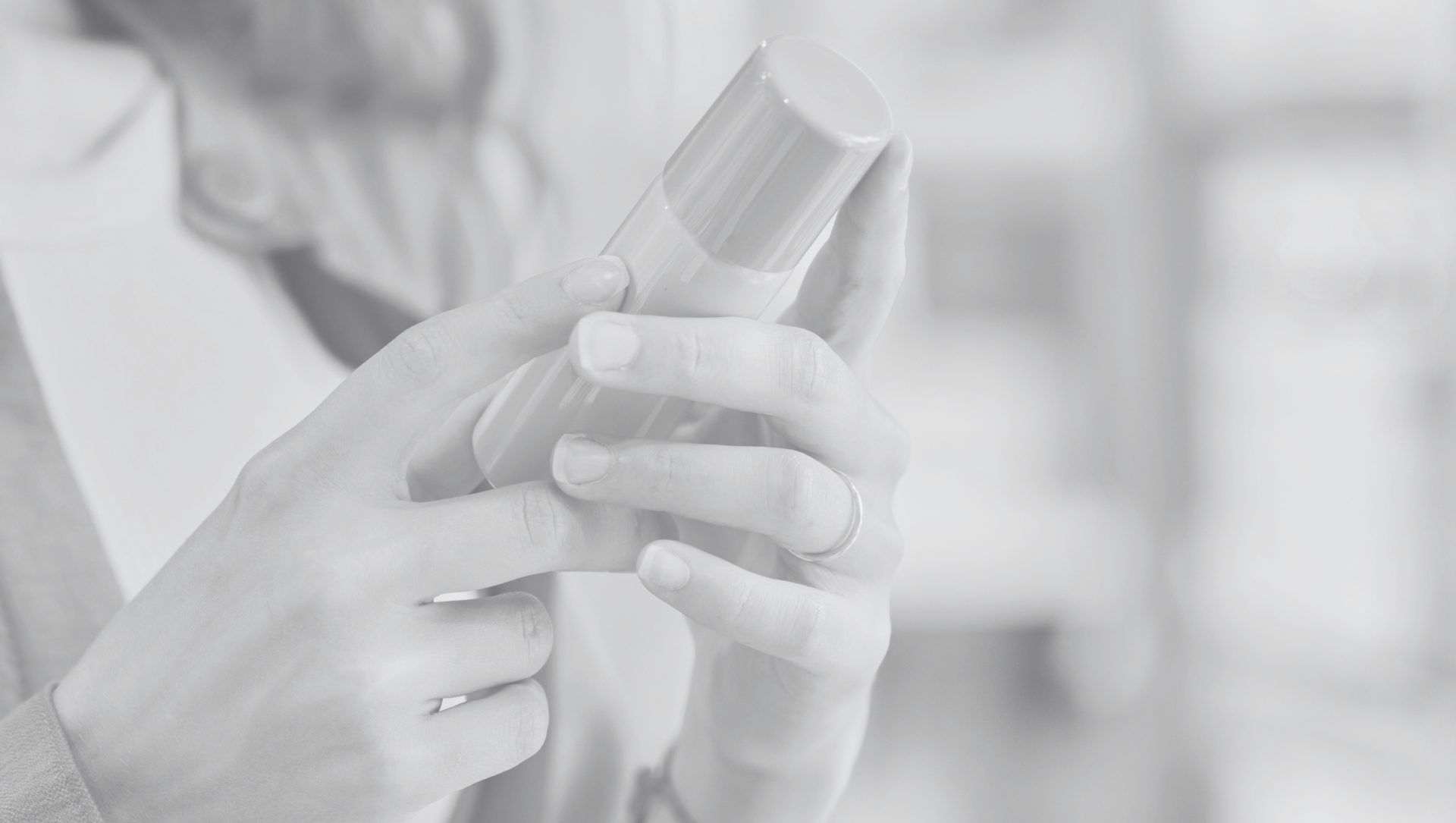
If you're developing a skincare or cosmetic product, you're going to run into four very important letters: INCI . But what is it exactly? Why does it matter? And how do you make sure your labels are compliant? At AURA, we help emerging beauty brands navigate this part of the process with ease — and in this post, we’re breaking it all down for you. ✅ What Does INCI Stand For? INCI stands for International Nomenclature of Cosmetic Ingredients . It's a standardized system for listing ingredients on cosmetic product labels. The purpose is to create clarity and consistency across all products, regardless of the brand or country of origin. Instead of using marketing names like "Vitamin C" or "Aloe," the INCI names would be: Ascorbic Acid (Vitamin C) Aloe Barbadensis Leaf Juice (Aloe Vera) 💡 Why Is INCI Required? INCI labeling is required in the U.S., Canada, EU , and most global markets. It ensures: Consumers know what they’re applying Consistency across international markets Compliance with FDA and FTC labeling laws in the U.S. 💥 If your label doesn’t use INCI names, you could face regulatory issues, product recalls, or retailer rejection. 📋 What an INCI List Looks Like A proper INCI list appears on the product packaging in descending order of concentration — starting with the ingredient used at the highest percentage in the formula — until ingredients under 1%, which may then appear in any order Example (INCI-compliant): Water (Aqua), Glycerin, Cetearyl Alcohol, Dimethicone, Butyrospermum Parkii (Shea Butter), Phenoxyethanol, Fragrance (Parfum) Common mistakes to avoid: ❌ “Shea Butter” instead of “Butyrospermum Parkii” ❌ “Preservatives” — must be listed by actual name (e.g., Phenoxyethanol) ❌ “Essential oils” without specific listing (e.g., Lavandula Angustifolia Oil) 🔍 INCI ≠ Ingredient Transparency Just because your INCI list is compliant doesn’t mean your formula is transparent or marketable. INCI is about regulation. Your marketing claims and "free from" language are separate — and need their own strategy. At AURA, we provide both a compliant INCI list and product label for our clients. 📊 INCI, Order of Ingredients & Thresholds In the U.S., the FDA requires ingredients to be listed in descending order by weight—until you hit ingredients that make up less than 1% of the formula. At that point, they can be listed in any order. Key thresholds: Active ingredients (if making drug claims) must be listed in the Drug Facts panel (AURA does not manufacture OTC or Drug Products) Fragrance can be listed as "Fragrance (Parfum)" 🔧 How Aura Helps With INCI Compliance At AURA, we handle your full INCI deck in-house as part of your custom formulation process. We ensure: Every raw material’s INCI name is used correctly Your labels match the formula in your bottle We’ll even prepare INCI decks ready for packaging designers, Amazon uploads, and retailer on boarding. 🧠 Frequently Asked Questions (FAQ) Q: What does INCI stand for? A: INCI stands for International Nomenclature of Cosmetic Ingredients. It is the globally standardized system used to list cosmetic and skincare ingredients on product packaging. Q: Why is INCI labeling important? A: INCI labeling ensures consistency, legal compliance, and consumer safety. It helps regulators, manufacturers, and consumers clearly identify the ingredients used in cosmetic products, regardless of country or language. Q: Is INCI labeling required by law? A : Yes. INCI names are required on cosmetic product labels in the U.S., Canada, the EU, and most regulated markets. Products that fail to use INCI names may face regulatory penalties or removal from retail shelves. Q: How are ingredients listed on an INCI label? A: Ingredients are listed in descending order by weight, starting with the highest concentration. Ingredients present at less than 1% can be listed in any order after those above 1%. Q: Can I use common names like 'Shea Butter' or 'Lavender Oil'? A: No. You must use the official INCI names—for example, Butyrospermum Parkii for shea butter and Lavandula Angustifolia for lavender oil. 🚀 Ready to Launch Your Product With Confidence? Your packaging is more than just design — it's a legal and regulatory tool. We make sure your skincare or cosmetic product is both compliant and beautifully presented.

Launching a beauty brand is exciting—but also full of pitfalls. At AURA, we’ve helped cosmetic startups avoid costly mistakes. This post outlines the top 5 challenges first-time founders face—and how you can avoid them. Whether you’re dreaming up your first serum or scaling your skincare empire, here are five critical mistakes new beauty entrepreneurs often make—and exactly how to avoid them. 🚫 Mistake #1: Starting Without a Clear Product Strategy Many founders jump straight into samples and scents without thinking through what their brand stands for, who it serves, or why it’s different. Why it matters: Without a focused product strategy, you risk ending up with a “me-too” product that blends into the crowded market. Avoid it by: Defining your hero product (not a full line—yet) Nailing your target audience and use case Clarifying your value proposition 🚫 Mistake #2: Choosing the Wrong Manufacturing Partner It’s tempting to go with the fastest or cheapest option—but not all manufacturers are created equal. Why it matters: A poor formulation, slow communication, or lack of compliance can destroy your launch before you start. Avoid it by: Vetting manufacturers with real experience in your category (haircare, skincare, etc.) Asking about MOQs, lead times, and formulation testing and compliance Choosing a partner who values quality, transparency, and brand alignment —not just volume 👋 At Aura , we specialize in custom manufacturing for growing brands who want full control over their product and long-term success. 🚫 Mistake #3: Underestimating Testing & Timelines Some founders assume they can go from idea to shelf in a month or two. That’s not just unrealistic—it’s risky. Why it matters: Rushing can skip over crucial steps like stability testing , regulatory review, and packaging QA—leading to product failure or legal issues. Avoid it by: Budgeting 4–6 months (minimum) for new formulations Allowing time for iterations , not just the “first try” Working with a manufacturer who clearly outlines your development timeline 🚫 Mistake #4: Going Too Broad, Too Fast Launching 8 products at once might seem like a power move—but it often results in inventory waste, diluted messaging, and poor product focus. Why it matters: Hero products win categories. Overbuilding early spreads your resources thin. Avoid it by: Starting with 1–3 core SKUs Testing market response before scaling Building line extensions based on real customer demand 🚫 Mistake #5: Skipping Regulatory & Claims Review First-time founders often don’t realize that even "natural" or "clean" products must comply with FDA , MoCRA , and FTC guidelines. Why it matters: Improper labeling, unapproved claims, or lack of safety documentation can trigger recalls, penalties—or worse. Avoid it by: Working with a manufacturer who understands compliance Investing in real documentation—not just good design ✅ Final Thoughts: Don’t Just Make a Product—Build a Brand That Lasts Every major beauty brand started with a unique vision and the right partner. Aura is here to help you get it right the first time . Whether you’re building a serum, balm, or hair care system, we’re more than a manufacturer—we’re a launch partner who understands the full journey. Frequently Asked Questions 1. What are common mistakes first-time beauty founders make? Common mistakes include skipping compliance checks, underestimating costs, poor product formulation, weak branding, and inadequate quality control. 2. How can new beauty founders avoid these mistakes? By partnering with experienced manufacturers, prioritizing regulatory compliance, budgeting realistically, investing in product development, and implementing strict quality assurance. 3. Why is compliance important for beauty startups? Compliance ensures product safety, and consumer trust, which are critical for long-term success. 4. Can Aura help first-time beauty founders? Yes, Aura offers end-to-end support including formulation, compliance guidance, manufacturing, and quality control tailored for startups.
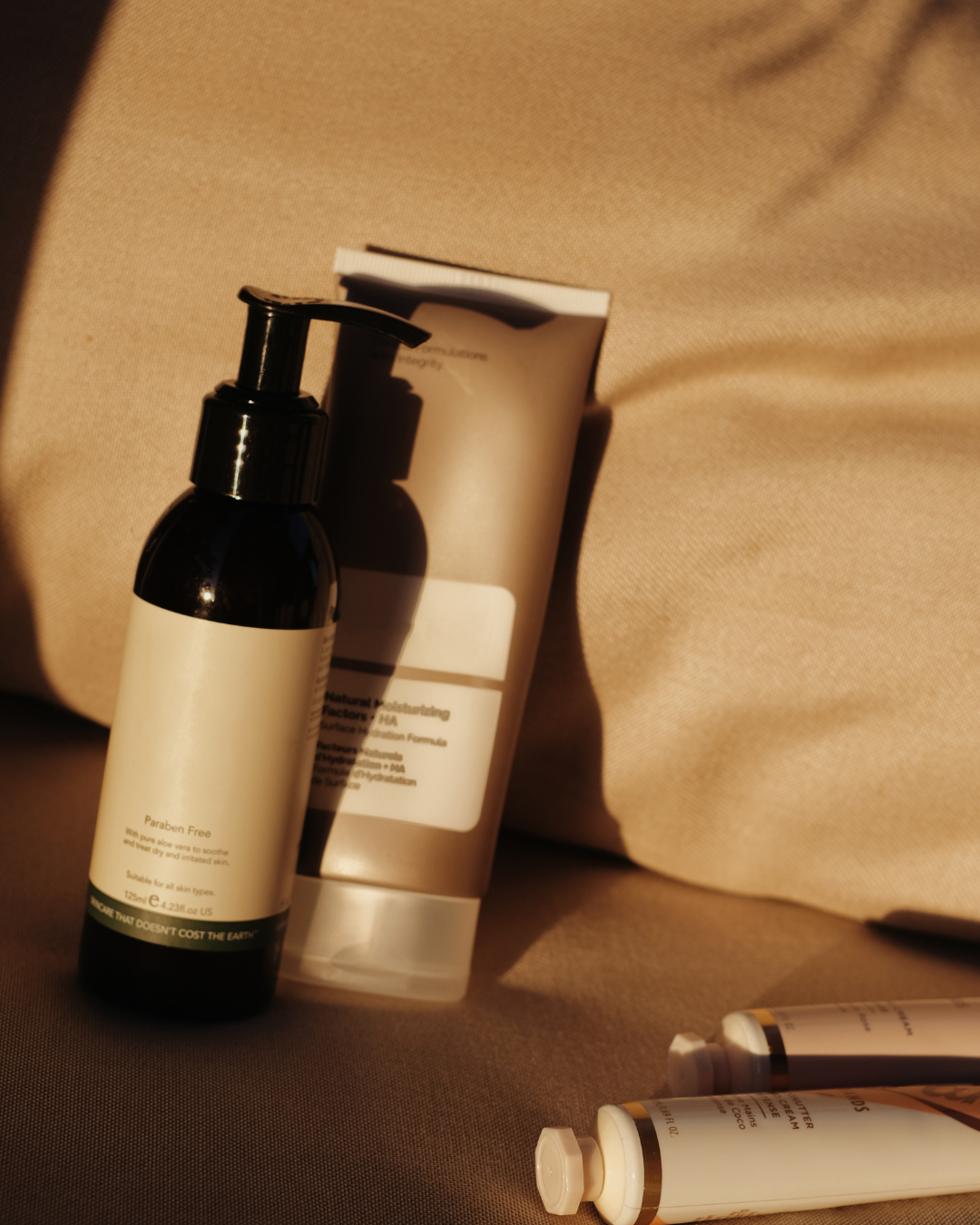
If you’re building a beauty or personal care brand, choosing the right product development path is critical to your success. At AURA, we help brands of all sizes navigate three main options: ✅ White Label ✅ Private Label ✅ Custom Formulation But what do these terms actually mean? And how do you know which one is right for your business? In this post, we’ll break it down clearly—so you can make an informed choice based on your goals, budget, and timeline. What Is White Label Cosmetic Manufacturing? White label means you start with a ready-made product formula that can be branded as your own. At AURA, our white label solutions leverage commercially available bases—proven, high-quality formulas that are already market-tested. You can customize: Fragrance Packaging Label design …but the core product formula stays the same. White label is ideal when: You want to launch quickly You want to minimize development costs You want to test new categories with lower risk What Is Private Label Cosmetic Manufacturing? Private label is a step beyond white label. In this model, you typically: Start with a base formula Make select adjustments (fragrance, texture, color, active ingredients) Package it under your own brand Private label is ideal when: You want more control over how your product performs and feels You want to differentiate from standard white label offerings You want a balance between customization and speed to market What Is Custom Cosmetic Formulation? Custom formulation means creating a completely new, unique formula in partnership with a chemist. At AURA, our chemist develops custom skincare, haircare, body care, and men’s grooming products designed to your specifications.* Custom formulation is ideal when: You want a unique product You need specific performance attributes You want to build long-term brand value You’re ready to invest in R&D and testing cycles How to Choose the Right Path for Your Brand When deciding between white label, private label, and custom formulation, consider: ✅ Speed to market: If you need to launch fast, white label is the best option. ✅ Budget: White label and private label have lower startup costs, while custom requires more investment. ✅ Brand positioning: For luxury, performance-driven, or highly unique products, custom formulation is often best. ✅ Product complexity: If your category requires innovative claims or ingredients, custom is the right choice. ✅ Growth plans: Private label or custom is often a better fit for brands with long-term scaling ambitions. Final Thoughts There’s no one-size-fits-all path to building a beauty brand. That’s why at AURA, we offer white label, private label, and custom formulation solutions — so you can choose the best fit for your vision, goals, and budget. 👉 Ready to discuss your project? Our team is happy to walk you through your options and help you create products your customers will love. FAQ What is the main difference between private label and white label cosmetics? White label products use an existing formula with minimal customization (branding, packaging), while private label allows more customization of the base formula and product characteristics. Is custom formulation worth the investment? If you want a unique product that fully represents your brand, yes. Custom formulation gives you control but requires more time and budget. Does Aura offer all three options? Yes! We specialize in flexible manufacturing solutions — from white label to full custom formulation — to support beauty brands at every stage of growth.
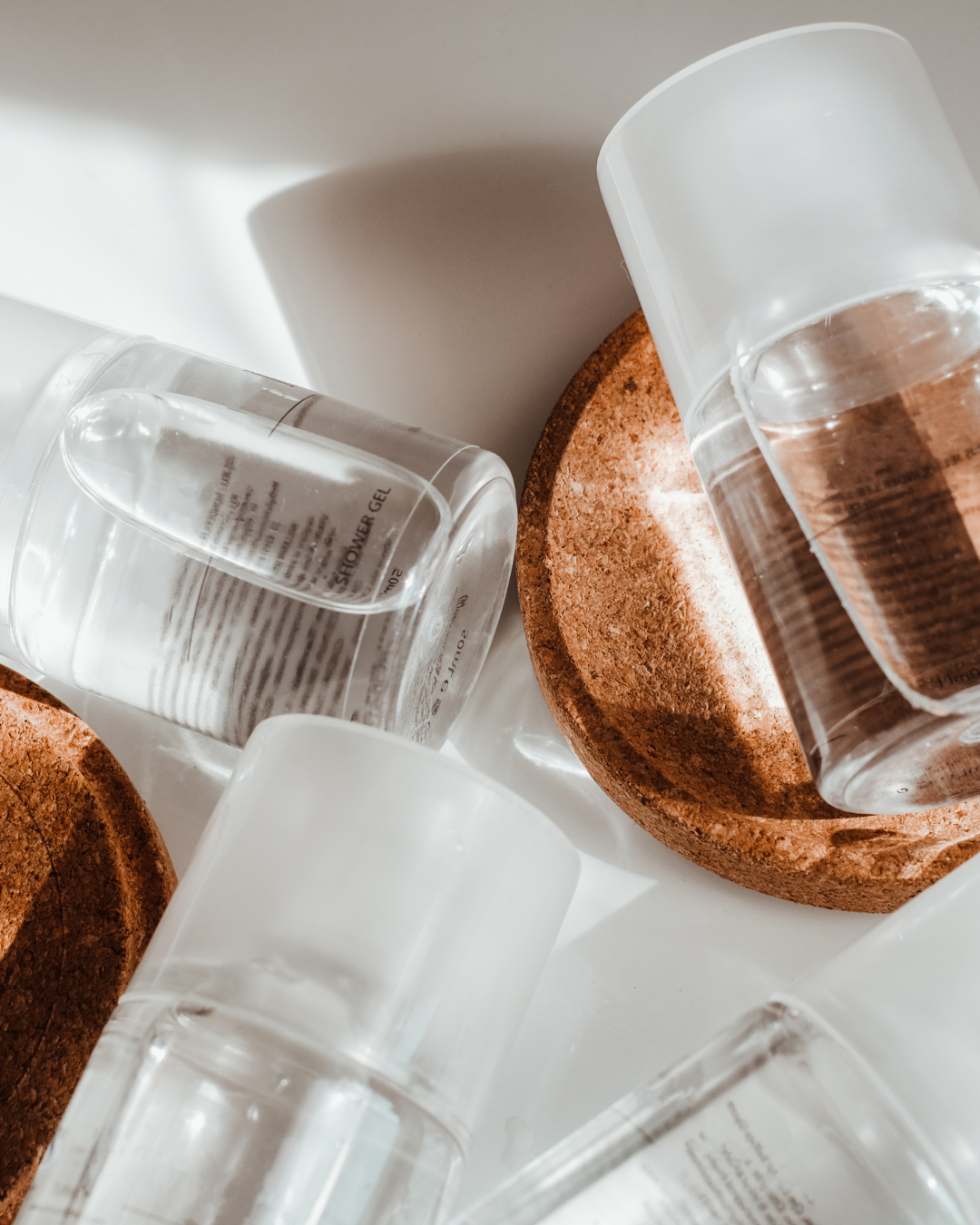
If you're launching or scaling a cosmetic brand, one term you'll encounter early is MOQ—Minimum Order Quantity. But what exactly does MOQ mean in the world of cosmetic manufacturing? And how can understanding MOQs help you make smarter decisions for your business? In this guide, we’ll break it down simply—so you can confidently plan your next product run. What Is MOQ in Cosmetic Manufacturing? MOQ refers to the minimum number of units of a product that a manufacturer requires you to order for production to take place. For example, if a skincare manufacturer has an MOQ of 1,000 units per SKU (stock keeping unit), you must order at least 1,000 bottles of that serum or moisturizer to proceed. MOQs help manufacturers manage: Production costs Ingredient sourcing Packaging purchases Efficiency in their production line At AURA, we work with flexible MOQ options to support both emerging brands and scaling businesses. Why Do MOQs Exist? MOQs aren’t arbitrary. They reflect the realities of the cosmetic manufacturing process. Here’s why MOQs exist: 1. Ingredient Purchasing: Raw materials often come in bulk. Ordering a very small batch may not cover the cost of the minimum raw material purchase. 2. Packaging Constraints: Packaging suppliers often have their own MOQs. If jars or bottles have a 1,000-unit minimum, that impacts your product’s MOQ. 3. Production Efficiency: Setting up equipment for filling, labeling, and capping takes time and labor. Manufacturers aim to run efficient batches that justify those setup costs. 4. Regulatory & Testing Costs: Testing (such as stability and microbial testing) carries fixed costs, which are more economical at higher volumes. Typical MOQ Ranges in Cosmetic Manufacturing MOQ can vary widely depending on: The type of product Whether you’re using a stock base or custom formulation The complexity of the product and packaging Here’s a general example of typical MOQ ranges* — keep in mind that actual MOQs may vary, so it’s always best to reach out to discuss your specific project: Product Type Example MOQ Range* | --------------------------------- | ---------------------- | Stock White Label ~250 – 1,000 units Custom Formulations ~1,000 + units These ranges are provided as general examples only. Actual MOQ will depend on your specific formulation, packaging, and production needs. We encourage you to contact us directly for an exact quote tailored to your project. How Aura Manufacturing Supports Flexible MOQs At Aura Manufacturing, we know that not every brand starts with massive volumes. That’s why we offer: ✅ Low MOQ white label solutions — great for startups and first launches ✅ Commercially available base customization — allows for small batch flexibility ✅ Scalable custom manufacturing — so you can grow with us as your business scales Our team will work with you to find an MOQ that balances: Cost efficiency Inventory needs Cash flow considerations How to Approach MOQ As a Brand Owner Here are a few smart ways to think about MOQ when you’re planning production: 1. Know your budget: Ordering too small can make your cost per unit very high. Ordering too large can strain cash flow. 2. Test the market: Start with lower MOQs when possible to validate demand. 3. Plan for reorders: If your product is successful, having a manufacturer who can scale with you is key. 4. Understand packaging impact: Unique packaging may require higher MOQs—discuss this early with your manufacturer. Final Thoughts MOQ is a key part of any cosmetic manufacturing relationship. Understanding it helps you plan smarter, negotiate better, and avoid surprises. At AURA, we’re passionate about helping brands of all sizes succeed. Whether you need low-MOQ white label products to get started or full custom manufacturing to scale your line, we’re here to help. FAQ What is a good MOQ for a new cosmetic brand? It depends on the product and your business goals. Many new brands start with 250 to 1,000 units per SKU for white label products to test the market. Can I negotiate MOQ with a manufacturer? Sometimes, yes—especially if you have a long-term growth plan. Be open about your needs and future scaling potential. Why do custom formulas require higher MOQs? Custom formulas involve unique ingredient sourcing, formulation work, and testing. Higher MOQs help justify these additional investments. How do I find out my exact MOQ with AURA? Simply contact us. We’ll review your project details and provide a tailored MOQ quote based on your specific needs.

Looking to create a signature scent for your skincare, haircare, or men’s grooming brand? Learn how custom fragrance development works, from concept to final formula. Why a Custom Fragrance Can Transform Your Beauty or Grooming Brand A great fragrance does more than smell good — it creates an emotional connection with your customer and becomes a core part of your brand identity. Whether you’re formulating a body lotion, facial serum, hair oil, or men’s shampoo, developing a custom scent can elevate your product, increase brand loyalty, and make your line instantly recognizable. At AURA, we help emerging and established brands create custom fragrances that align with their identity and delight their customers — across skincare, haircare, and men’s personal care. 🌿 Why Invest in a Custom Fragrance? Fragrance is one of the most powerful drivers of brand loyalty in beauty and grooming products. Here’s why: ✅ Brand Differentiation – A unique scent makes your product stand out in saturated markets. ✅ Emotional Connection – Scent triggers memory and mood; customers repurchase based on how it makes them feel. ✅ Elevated Perceived Value – A signature fragrance gives your brand a luxurious, experiential edge. ✅ Brand Storytelling – Scents reinforce brand positioning: clean, indulgent, masculine, herbal, clinical, etc. What Types of Products Benefit from a Custom Scent? Nearly every personal care product can be enhanced with a signature fragrance, including: Facial skincare – serums, moisturizers, cleansers, oils Body care – body lotions, butters, scrubs Hair care – shampoos, conditioners, leave-in treatments Lip products – balms, glosses, oils Men’s grooming – beard oils, aftershave, shave creams, pomades How the Custom Fragrance Development Process Works 1. Define Your Brand’s Fragrance Vision We begin with your brand identity: What do you want customers to feel? What mood, memory, or image should the scent evoke? Is this a hero product or part of a larger line? Should the fragrance be gender-neutral, masculine, feminine? Some common fragrance visions include: 🧘 Spa-like, calming, and clean 🍪 Warm, gourmand, and comforting 🌴 Beachy, fresh, and sun-kissed 🌿 Herbal, botanical, and grounded 🌹 Floral, feminine, romantic 🌲 Woody, earthy, masculine 2. Collaborate With a Professional Fragrance House At AURA, we partner with incredible fragrance houses to ensure your scent is beautiful, safe, and compliant. We build a fragrance brief based on your brand story and goals The fragrance house creates custom mods (versions) for you to test We ensure IFRA compliance and test compatibility with your base formula 3. Evaluate and Refine This is your moment to fine-tune: How does the fragrance evolve over time (top, middle, and base notes)? Does it smell as intended in the final product? Does it resonate with your target customer? Revisions and collaborative feedback are typical — and encouraged. 4. Final Approval & Documentation Once you choose your signature scent: Final compatibility testing is completed The fragrance is locked in for manufacturing Documentation is provided for regulatory and production compliance ⏱️ How Long Does Custom Fragrance Development Take? On average: Creative brief → first mods: 2–4 weeks* Evaluation and revisions: 2–6 weeks Finalization and documentation: 1–2 weeks 👉 Most brands complete the process in 6–8 weeks. 🤔 Frequently Asked Questions Q: Do I need to order large quantities of fragrance? A: It depends, Yes and No. Some stock fragrances are low moq, but for non stock scents your moqs are typically 25lbs. We work with startup-friendly fragrance houses with reasonable MOQs. Q: Can you match a scent I love? A: Yes — we can request a custom match or create a “fragrance inspired by” your reference. Custom Fragrance Services at AURA Manufacturing As a personal care manufacturer, we offer: Fragrance development & testing services Formulation services (custom or white label) Label design services Packaging design and co-packing Launch support for emerging and scaling brands Whether you're building a hero SKU or an entire scented line, AURA is here to help you create products that smell as good as they perform. Ready to Develop a Signature Scent? A great fragrance drives brand experience, loyalty, and repeat purchases. At AURA, we help you go beyond generic — and build a sensory experience that tells your story.

